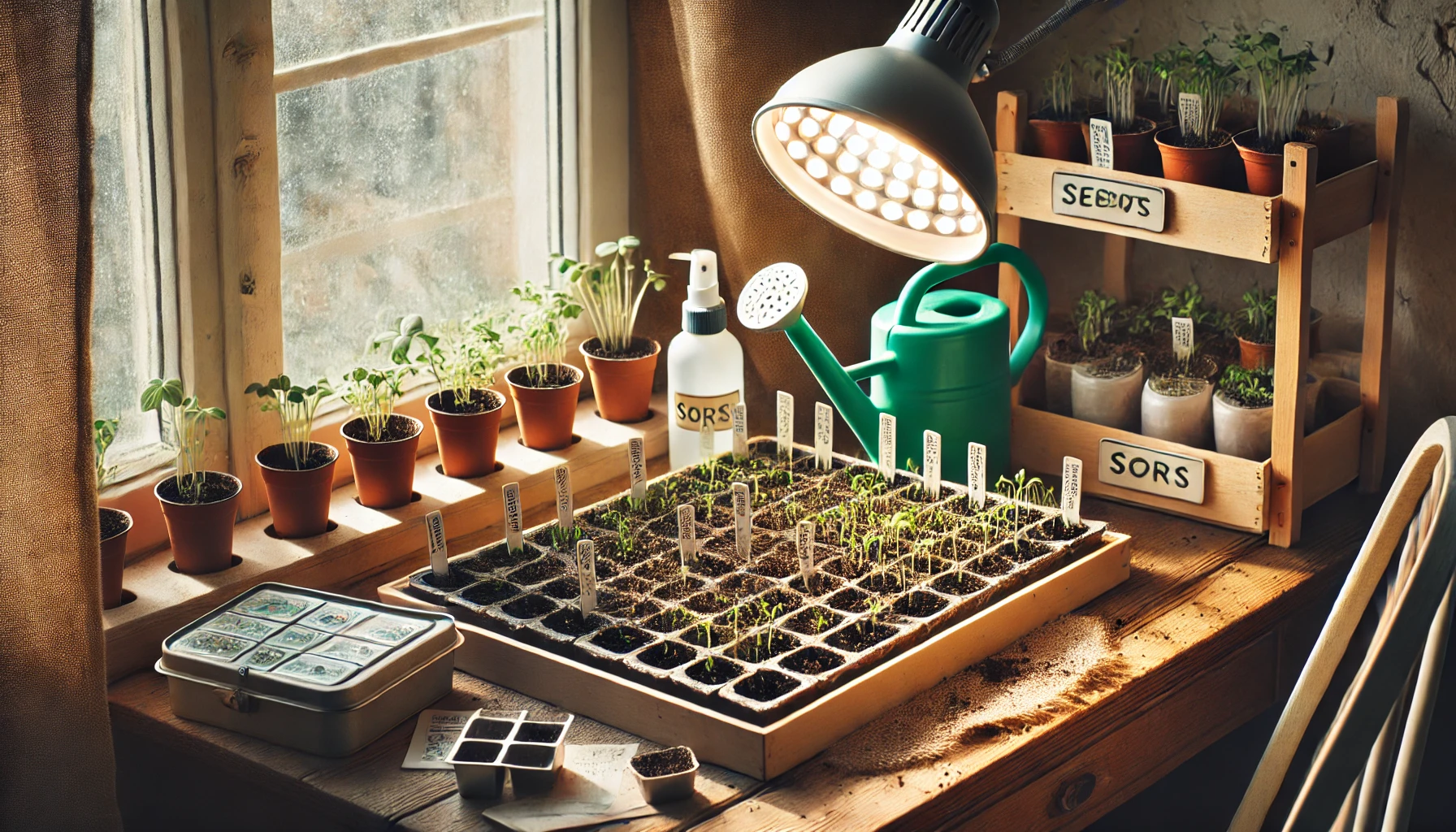Growing plants from seeds indoors is a rewarding and cost-effective way to start your garden. By controlling the environment, you can give your seeds the best chance to germinate and grow into healthy plants. This guide will walk you through the process of starting seeds indoors, from choosing the right seeds to transplanting them into your garden.
Benefits of Growing Plants from Seeds
- Cost-Effective: Seeds are more affordable than buying mature plants.
- Variety: Offers access to a wider range of plants, including rare or heirloom varieties.
- Healthy Growth: Starting from seeds ensures your plants are free from pests or diseases.
- Early Start: Allows you to grow plants before the outdoor growing season begins.
What You’ll Need
- Seeds of your choice.
- Seed trays, small pots, or recycled containers with drainage holes.
- Seed-starting mix (light and well-draining).
- Watering can or spray bottle.
- Plastic wrap or a seedling dome for humidity.
- Grow lights or a sunny windowsill.
- Labels or markers for plant identification.
Step-by-Step Guide to Growing Seeds Indoors
Step 1: Choose Your Seeds
- Select seeds suitable for your climate and the season.
- Start with easy-to-grow options like tomatoes, lettuce, herbs, or flowers.
Step 2: Prepare Your Containers
- Clean your seed trays or pots to prevent disease.
- Fill containers with seed-starting mix, leaving about 1 inch of space at the top.
Step 3: Plant the Seeds
- Check the seed packet for depth and spacing instructions.
- Gently press seeds into the soil at the recommended depth and cover lightly with soil.
Step 4: Water Gently
- Moisten the soil with a spray bottle or watering can. Avoid overwatering, as seeds can rot in soggy soil.
Step 5: Create a Warm, Humid Environment
- Cover the containers with plastic wrap or a seedling dome to retain heat and moisture.
- Place the containers in a warm spot, such as on top of a refrigerator or near a heater.
Step 6: Provide Adequate Light
- Once seeds germinate, remove the cover and place them in a bright location with 12-16 hours of light daily.
- Use grow lights if natural light is insufficient. Position lights 2-3 inches above the seedlings.
Step 7: Thin the Seedlings
- When seedlings develop their first true leaves, thin them out by snipping weaker plants at the soil line. This prevents overcrowding and promotes healthy growth.
Step 8: Transplant to Larger Pots
- Once seedlings outgrow their containers, transplant them into larger pots to encourage root development.
Caring for Indoor Seedlings
1. Watering
- Keep the soil consistently moist but not waterlogged.
- Use a spray bottle or gentle watering can to avoid disturbing the delicate seedlings.
2. Fertilizing
- Begin feeding seedlings with a diluted liquid fertilizer once they develop true leaves.
- Fertilize every 2 weeks until transplanting outdoors.
3. Air Circulation
- Use a small fan to improve airflow around seedlings and prevent fungal diseases.
- Rotate trays daily to ensure even growth.
4. Monitor Growth
- Keep an eye out for signs of stress, such as yellowing leaves or leggy growth, and adjust care accordingly.
Hardening Off Seedlings
Before moving seedlings outdoors, gradually acclimate them to outdoor conditions:
- Start by placing seedlings in a sheltered outdoor spot for 1-2 hours.
- Gradually increase their time outside over 7-10 days, exposing them to sunlight, wind, and cooler temperatures.
- Once hardened off, transplant them into your garden or larger containers.
Common Mistakes to Avoid
- Overwatering: Too much water can lead to root rot or fungal growth.
- Insufficient Light: Without enough light, seedlings may become leggy and weak.
- Skipping Labels: Label containers to avoid confusion about plant types.
- Neglecting Hardening Off: Failing to acclimate seedlings can shock and damage them when transplanted outdoors.
Conclusion
Growing plants from seeds indoors is a fulfilling process that lets you nurture your garden from the very beginning. With the right setup, care, and attention, you’ll enjoy healthy seedlings ready to thrive in your garden or containers. This hands-on approach connects you to your plants and ensures a successful growing season.
